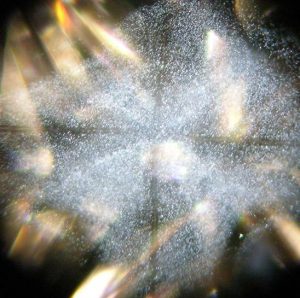What is Transparency?
Understanding Diamond Transparency: A Key Factor in Value and Beauty
What is Transparency in Diamonds? Transparency, also known as pellucidity, refers to a diamond’s ability to allow light to pass through without significant scattering or absorption. In mineralogy, this property is also termed diaphaneity. Transparency is a crucial characteristic that directly influences the appearance and value of a diamond.
Why is Transparency Important? Diamonds are highly valued for their exceptional transparency, which is a result of their unique crystal structure and chemical composition. Composed of carbon atoms arranged in a tightly packed crystal lattice, diamonds fall under the category of type IIa minerals. This uniform lattice structure enables light to traverse the diamond with minimal obstruction, enhancing its brilliance and fire.
Factors Affecting Diamond Transparency
- Inclusions and Blemishes: A diamond with high transparency is typically free from inclusions or blemishes that may hinder light passage. The absence of internal flaws, such as clouds or graining, contributes to its clarity. Transparency grades range from Excellent to Poor, with higher grades reflecting superior clarity.
- Cut Quality: The cut of a diamond significantly impacts its transparency. A well-cut diamond features symmetrical shapes and well-proportioned facets that facilitate optimal light entry and exit at the correct angles. This ensures that light performs effectively, enhancing the diamond’s brilliance.
- Clarity: A diamond with good clarity lacks internal and external imperfections that can interfere with light transmission. High-clarity diamonds allow light to pass through unobstructed, further boosting their transparency.
- Colour: The colour of a diamond also plays a role in its transparency. Diamonds with a high level of colourlessness (near colourless) permit more light to pass through compared to those with noticeable yellow or deep coloured tints. Fancy coloured diamonds, particularly in deep intensities, may also affect the overall perception of transparency.
The Value of Transparency In general, diamonds with higher transparency levels are more valuable. This characteristic is a key factor evaluated during the grading and pricing of diamonds. Type IIa diamonds, which consist of pure carbon bonds, are considered the rarest and most desirable, particularly in the white or cape series of colours.
DCLA’s Contribution to Transparency Grading The Diamond Certification Laboratory of Australia (DCLA) was the first internationally recognised laboratory to incorporate a transparency grade into its diamond grading report. The DCLA developed the Transparency Grade System, assessing the degree to which a diamond transmits light, specifically evaluating its ‘cloudiness’ or ‘haziness.’
This comprehensive assessment of light performance provides valuable insights into the quality of the diamond crystal itself, making it an essential factor for consumers and collectors alike. The Transparency Grade is now a standard feature on the DCLA Diamond Grading Report, ensuring that buyers are well-informed about the transparency and overall quality of their diamonds.
Conclusion Understanding transparency is vital for anyone looking to purchase a diamond. It not only enhances the stone’s visual appeal but also significantly affects its value. When evaluating diamonds, always consider transparency alongside other factors such as cut, clarity, and colour to make the best investment decision.
What affects Transparency?
Diamond transparency can be affected in many ways. Certain types of inclusions, such as clouds and twinning lines, structural phenomena such as graining, and even fluorescence can have an impact on a diamond’s ability to transmit light.

